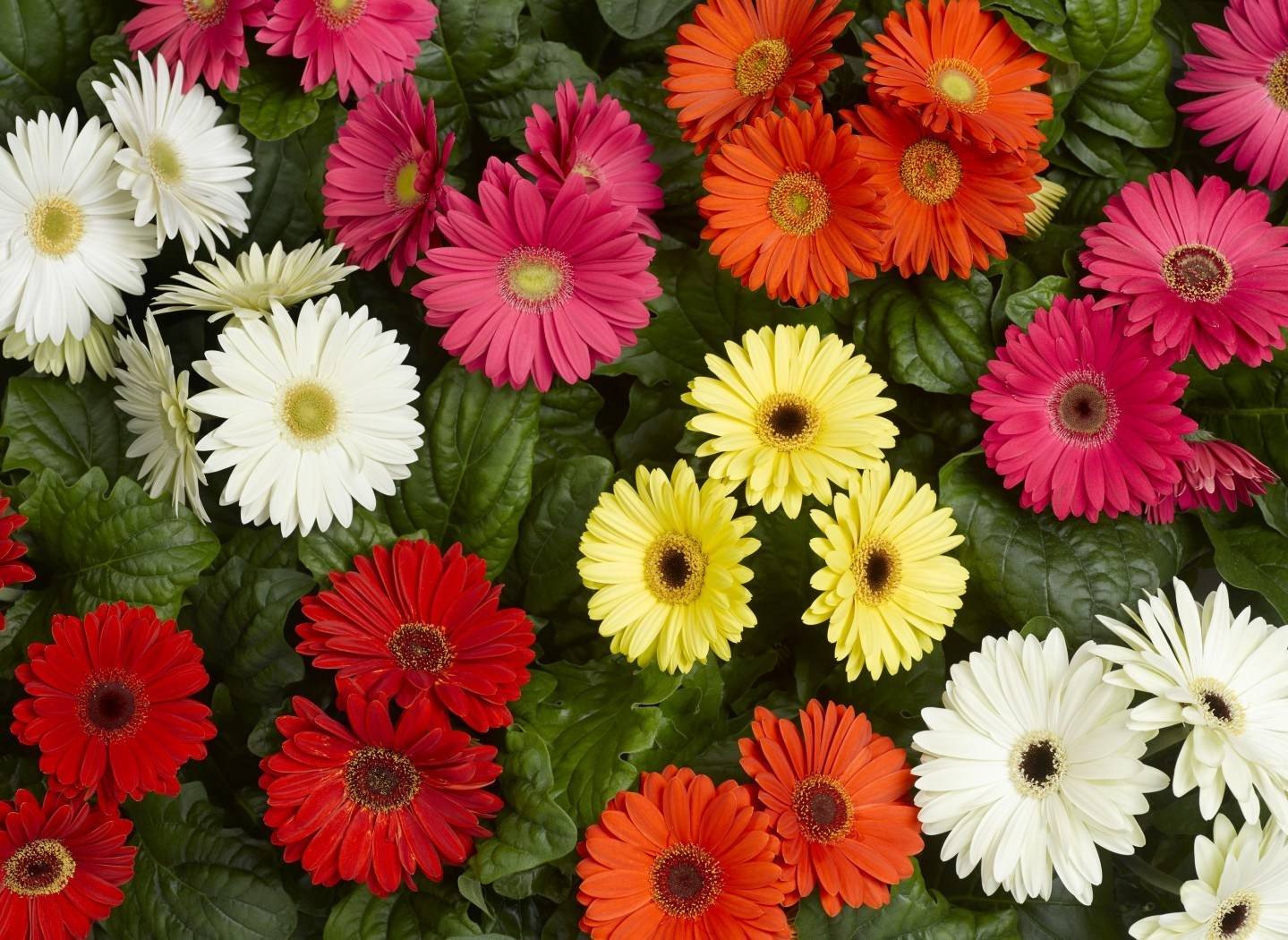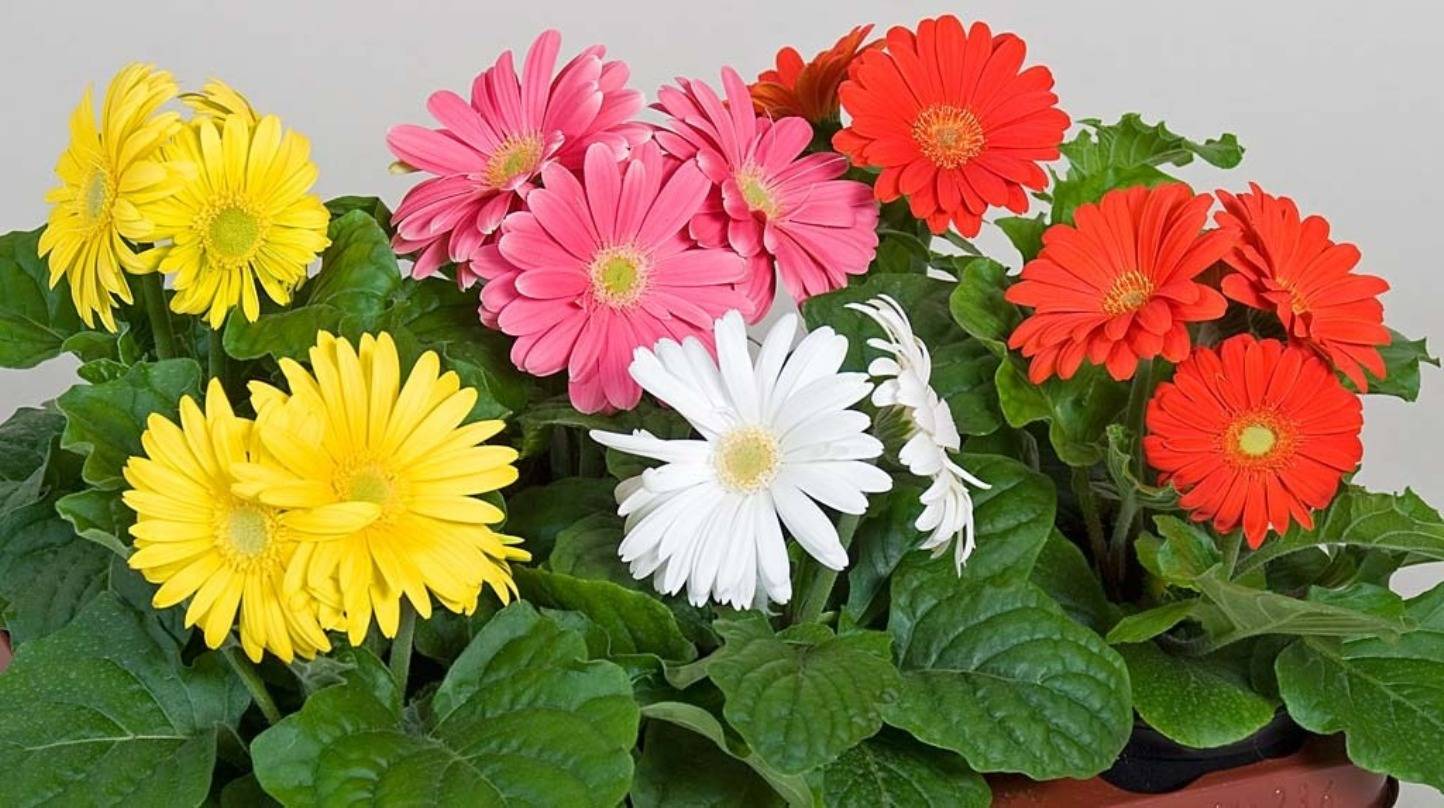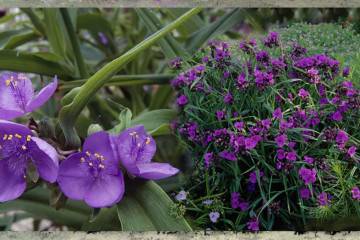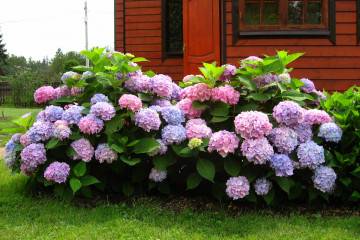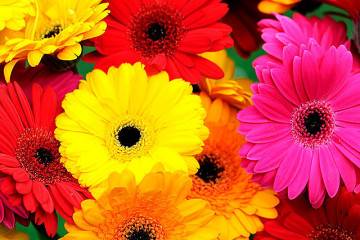Gerbera flower garden planting and outdoor care
Content:
Garden gerbera is an amazingly beautiful plant that can become an elegant decoration for any landscape composition. The homeland of this flower is hot Africa. He arrived in Europe only in the 18th century and quickly earned the love of noble ladies. The exquisite flowers were used as living ornaments. Gerbera is now so popular that it ranks fifth in the world in terms of sales.
Short description
Gerbera is a herbaceous perennial from the Astrov family. Since the plant came from a warm climatic zone, it is quite capricious. Growing a flower on your own plot requires a certain amount of knowledge. In the literature, you can find other plant names, for example, transvaal daisy or chamomile.
The botanical description of the garden gerbera is as follows:
- It is a bush with a height of 30-35 cm.Some species can grow up to 50 cm.
- The root system is fibrous, the roots are short.
- The leaves are located in a basal rosette, elongated, ending in a kind of "peaks", fleshy. The color is deep green.
- The flower is shaped like a chamomile. There are simple, double and semi-double gerberas. Diameter - from 10 cm.The color of the petals can be white, pink, yellow or red. The core is always brown.
- The fruit is a compact capsule.
The duration of flowering is from a month to three, but elegant inflorescences will delight the eye of a grower only with proper care. This is the garden gerbera: planting and caring for this plant is considered quite difficult, so it is not recommended for beginners.
Species diversity
The number of species of garden gerbera is large - more than 50. And thanks to the efforts of breeders, new hybrids regularly appear with improved properties and increased decorative effect. However, there are only two “progenitors” of the main garden hybrids - Jameson's gerbera and green-leaved.
Here are some varieties of street gerbera (Gerbera) popular among flower growers:
- Jamson. Perennial, resistant to the vagaries of the weather in the middle zone. Differs in decorativeness, variety of color options. Inflorescence up to 10 cm in diameter.
- Patio Klondike. The height of the bush is up to 0.5 meters, the leaves reach a length of 15 cm, the flowers are white or scarlet.
- Wright. A very capricious variety, suitable for growing in a greenhouse. However, the stunningly beautiful lush bloom redeems all the worries associated with leaving.
- Abyssinian. The bush is up to 45 cm high, the flowering period is from the beginning of summer to the first frost. The flowers are white or crimson.
- Vega. It is a hybrid of American origin with large flowers up to 14 cm in diameter and elegant, sunny orange petals.
- Alcor. The most suitable variety for outdoor cultivation with deep pink flowers and narrow leaves. The height of the shrub does not exceed 60 cm.
The breeders also managed to develop several mini-varieties that are ideal for decorating compact flower beds and rockeries. These are Royal Lemon, Orange, Scarlett and others. Also, flower growers often plant special varieties for home conditions.
The specifics of outdoor care
The garden gerbera is a capricious plant that requires plenty of sunlight and regular but moderate watering. The flower does not tolerate waterlogging of the soil, begins to rot and quickly dies.
Choosing the right place
When considering how to grow gerbera flowers, you should begin by describing a suitable site for the plant. For the capricious "princess of the garden" you need a sufficient amount of sunlight, reliable protection from wind and drafts.
In the summer, the plant should be protected from the scorching sun rays, creating a light openwork shading in the morning.
Watering and humidity
For African plants, high humidity is of particular importance, but the inflorescences themselves cannot be sprayed. Irrigation should be done in moderation, but very carefully, waterlogging of the soil is the most common cause of plant death.
For irrigation, soft water that has settled for at least 24 hours is used - cold liquid will negatively affect the well-being of the gerbera. The frequency of humidification depends on precipitation. In the dry season, irrigation is watered as the soil dries up, during the period of precipitation and closer to autumn, irrigation stops.
Spraying
This is the simplest method of preventing pests and diseases, improving the decorativeness and attractiveness of a flower. To avoid infections, prophylactic spraying from a spray bottle is carried out using insecticides and fungicides.
Do not overuse sprays, otherwise excessive moisture can provoke root rot.

Only in the case of high-quality regular care, the plant will delight its owner with lush flowering.
Soil selection
Gerbera prefers a soil of medium acidity, light and fertile. Before planting, remove all weeds, dig up the soil and enrich it with peat. The introduction of humus into the flowerbed is unacceptable, this can provoke rotting of the roots. To reduce the risk of diseases, the soil is disinfected with a solution of potassium permanganate before planting.
Feeding options
Growing gerberas in the garden requires the introduction of fertilizers. However, organic matter for these beautiful plants is categorically not suitable, otherwise there is a high risk of fungal infections. For feeding, mineral complexes for flowering are suitable. Basic fertilization rules:
- Compositions enriched with nitrogen are added when the green mass is growing.
- During the budding period, calcium and potassium are important, they stimulate lush flowering. Use the appropriate complexes every 2 weeks, reducing the dosage indicated on the package by 50%.
Wintering plants
When growing garden gerbera in southern latitudes, wintering in the open field is allowed, but after preliminary preparation. When the plant fades, peduncles are carefully removed with pruning shears, watering is gradually reduced, and feeding is stopped. Before frosts, the root area of the gerbera is covered with straw, hay, fallen leaves collected under healthy crops.If the apple or cherry tree gets sick in the summer, then the leaves cannot be used, they should be burned.
In the conditions of the middle zone, wintering of a crop outdoors is not allowed if a beautiful plant is grown as a perennial. It should be carefully dug up; this must be done before the first frost. Then move to the pot and transfer to the house. In winter, the gerbera needs special conditions, so the flower is placed in a room with low humidity and temperatures up to +14 degrees. A lighted basement will do. Watering is carried out rarely - about once a month or as the earthen coma dries up. Do not fertilize in winter.

Proper preparation for winter will prolong the life of the perennial and allow you to enjoy flowering next season.
If there is no basement, then the container with the flower is brought into the coolest but brightest place in the house, for example, on a glazed balcony.
Flowering outdoors
Gerberas are very beautiful during the flowering period in the garden: growing and caring for these capricious plants is more than worthwhile during budding. Flowers in garden varieties are often lush, double or semi-double, in appearance they resemble chamomile, but much larger and more decorative.
Here's what it takes to bloom:
- Stable temperature conditions (from +23 degrees).
- Suitable humidity.
- Nutritious soil, therefore, during the budding period, special attention should be paid to fertilizing.
Types and forms of flowers
By color, gerbera flowers are:
- white;
- yellow;
- red;
- orange;
- pink;
- variegated.
The brightest and most beautiful are hybrids. Narrow-, medium- or broad-petaled plants are found in the shape of the petals.
The duration of flowering depends on the climatic conditions and the variety, and can last from July to November. Then the plant enters a dormant period.
Organization of care
Gerbera blooms are long, so it is important to take good care of the plant. Watering and feeding should be regular, in addition, faded flower stalks should be periodically removed - they are cut off near the base. This will not only prolong flowering, but will also prevent rotting and fungal infections.
To remove dust, foliage is sprayed from a spray bottle.
The specificity of culture reproduction
Considering how to grow a gerbera in the country, you should get acquainted with the main methods of reproduction of this ornamental plant, which looks no worse than a gardenia or garcinia. Gerbera can be propagated in two ways.
Seed method
Germinating seeds is a rather laborious option, the key disadvantage of which is that it is not always possible to preserve the varietal qualities of the mother plant. There is a great risk that the flower of the new bush will turn out to be of a completely different shape, color, or it will be simple instead of terry.
To reduce the risk of seed, it is recommended to purchase in trusted and reliable retail outlets. Independent production of hybrid seeds is impossible. The first flowering should be expected approximately 11 months after sowing.
Step-by-step procedure for germinating seeds:
- Prepare the substrate by mixing turf, leafy soil and humus in a 2: 1: 1 ratio. Additionally, coarse sand is added to the composition. There must be a drainage layer in the germination container.
- The soil must be moistened.
- Cover the seeds to a depth of about 2 mm. Or simply lay them out gently on the surface.
- Sprinkle with dry substrate on top.
- Cover the container with cellophane wrap. This will create a greenhouse effect and help maintain the required temperature and humidity.
- After about 10 days, the first shoots will appear.
Rooting cuttings
This is the easiest option to enjoy blooming next season. In addition, the varietal characteristics will be preserved.
Sequencing:
- Dig up a bush, cut off a leaf outlet and place it in a greenhouse. You can create it yourself by covering the flower pot with a PET bottle or plastic bag. Such a design will preserve the temperature and humidity indicators that are optimal for a capricious plant.
- After about 12 days, shoots will form from the air buds, which will become material for cuttings.
- After the formation of two leaves on them, they should be cut to a length of 1 cm, and then placed in a substrate of perlite, peat and sand.
- Further, for rooting, the shoots are transferred to favorable conditions: temperature +23 degrees, regular spraying to maintain the humidity level.
Rooting will begin in 2 weeks, but seedlings should be transplanted into separate pots only after 30 days.
Major difficulties and mistakes
Planting and caring for gerbera flowers is not an easy task, since a guest from Africa is quite capricious and whimsical. Even experienced flower growers can make a mistake that will nullify all efforts.
Falling foliage or buds
The main causes of the problem:
- Insufficient lighting.
- Low humidity.
- Violation of the temperature regime.
To stop dropping leaves and buds, you need to understand what is the error in the content of gerbera and eliminate it. The plant is transplanted to a lighter area, watering is normalized. If the average temperature outside is below +22 degrees, this means that this region does not allow the cultivation of gerbera in the fresh air, the plant will only be saved by transplanting it into a greenhouse.
Foliage turns pale
The main cause of this problem is excessive lighting. To protect the plant from the scorching rays of the sun, you should create an openwork shade for it, for example, using thin branches of a tall tree or not a solid fence.
The tips of the leaves dry
The factors provoking the problem are a lack of calcium in the soil, as well as insufficient moisture. Solution methods:
- Feed the plant with a calcium-containing preparation.
- To normalize humidity, install open containers with water near the planted bushes. You can organize an artificial pond, it will become an additional decoration of the site.
The lower leaves are falling
Most often, such subsidence provokes a lack of light or waterlogging of the soil. Bushes should be transplanted to a lighted area at a certain elevation in order to protect them from groundwater rising to the surface. You should also normalize the irrigation schedule, prevent waterlogging of the soil.
These are the main nuances regarding the cultivation of gerberas in personal plots. The plant is quite capricious, but with due diligence, the works of the grower will be rewarded with amazingly beautiful flowering. Bushes with bright flowers of all shades, planted along the curb, will adorn any landscape composition.
